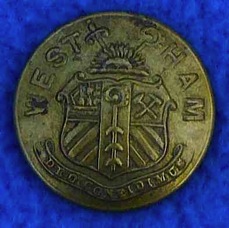West Ham Corporation Tramways
Owner West Ham Corporation
Took over 1st July 1903 (North Metropolitan Tramways Company [horse]) - lines in West Ham, which continued to be worked by the NTMCo pending electrification
First electric route 27th February 1904
Operator West Ham Corporation
Joint operation 31st March 1904 (with East Ham Corporation Tramways) - Canning Town (in West Ham) through East Ham to the latter's boundary with Barking Town
Joint operation 17th November 1905 (with EHCT) between Canning Town (in West Ham) and Barking Broadway
Joint operation 10th March 1909 (with EHCT) - Bow Bridge (in West Ham) to Ilford Broadway
Joint operation 11th May 1910 (with EHCT and London County Council Tramways) - Aldgate (in LCC area) to Ilford Broadway
Joint operation 17th November 1910 (with Barking Town UDC Tramways and EHCT) - Poplar (in West Ham) to Loxford Bridge (in Barking)
Joint operation 20th December 1912 (with BTUDCT, EHCT, and LCCT) - Aldgate (in LCC area) to Loxford Bridge (in Barking)
Joint operation 31st May 1914 (with EHCT, and LCCT) - Aldgate (in LCC area) to Barking Broadway, following withdrawal of BTUDCT from joint running
Taken over 1st July 1933 (London Transport)
Length 16.80 miles
Gauge 4ft 8½ins
Button description Title (‘WEST HAM'), above the municipal arms (a shield divided into five, bearing a sailing ship, half chevrons, crossed hammers and a crosier) with a sword, crosier and rising sun crest, all above the motto: 'DEO CONFIDIMUS'
Materials known Brass; chrome
Button Line reference [None]
Comment The buttons exist in two variations, with and without a raised rim. In the absence of specific 'tramway' pattern buttons, it would appear that West Ham Corporation used this general titled coat of arms pattern button for its tramway staff from its inception in 1903 up until the takeover of 1933.
A torse is a twisted roll of fabric that was wound around the top of the helm and crest to hold the mantle in place.
